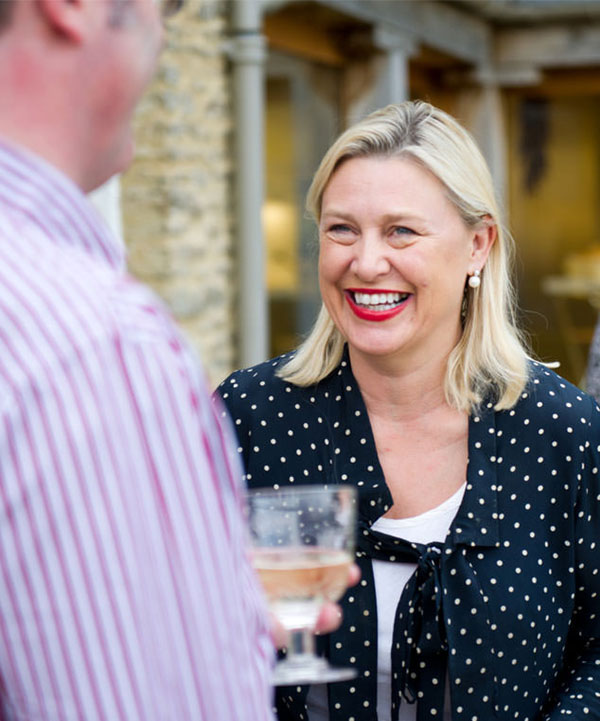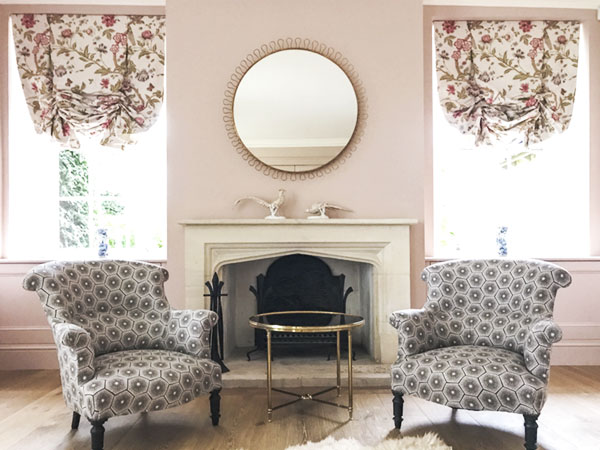On a trip to England this fall, my husband and I rented a small car and very slowly drove on the left through hedgerows slightly wider than my kitchen island to a place in the Cotswolds so quintessentially English, so utterly charming, that our first night, I dreamt I was a flower girl in Kate Middleton's wedding. Not the famously grumpy flower girl. The other one.
The place that spurred my dream is called Thyme, a cookery school, farm, hotel, spa, restaurant, and retreat. The manorial estate comprises 150 acres, many of them given over to sheep. All the buildings -- converted barns, farmhouses, cottages, manor house, and lodge -- are built of oolitic limestone formed during the Jurassic period. The estate itself is listed in England's ancient survey, the Domesday Book, written in 1086.
As if we didn't already have a massive crush on the English countryside. These are the sorts of things that make Americans swoon and I was no exception. From the moment we crunched up the gravel drive, my husband took on a stronger British accent by the hour while I cursed myself for leaving the good camera and tripod back in Wisconsin. (Unless otherwise credited, all photos taken with my iPhone.)
On our way into the barn for breakfast our first day, we chanced upon an elegant woman with her dogs. She wore the most beautiful Indian paisley shawl but what I noticed were the paint splotches on her arms. This was Caryn Hibbert, the visionary behind Thyme, who had just finished painting a few lampshades for the new rooms above ours.
If you are a regular reader of The Bubble Joy, you know how I love getting the scoop on a woman of substance, and Caryn has it in spades. She is a former London physician who left her practice for an entrepreneurial experiment that has lasted fifteen years. With the help of her parents, she has turned a sleepy little English hamlet into a self-sustaining estate employing sixty locals year round.
She kindly spoke to me at length about her passion for the land and her plan for the future. She readily admits to "so so much naivete" when first starting out. "I can't tell you how hard we worked," she said.
Speaking with her staff, I learned that Caryn does nothing by half. She studied every single process no matter how complex -- farming, architectural restoration, plumbing and electric, cooking, hospitality, etc. and left nothing to chance. It goes without saying that the cost of such an investment must be considerable, but with financial backing from her parents and her husband, Caryn is making a go of it. Her bucolic gem might even be setting a new standard for responsible land use and sustainable economic development.
Caryn is unique. I think that in her DNA, the artistic line and the science line are equally dominant. This marriage of traits might explain her willingness to take risks, to treat her work as a laboratory, to seek a true aesthetic. Photo by Amy Murrell.
This is Michelle picking apples for the basket in the reception hall. Everyone at Thyme contributes to the homey atmosphere. Also, don't you love the floral dress? That's a workplace uniform I wouldn't mind donning every day.
The tithe barn was the first structure that Caryn renovated to become the cookery school. Caryn spares no expense -- she is in this endeavor for the long haul. Every structure is technically advanced with ground-sourced heatings and sophisticated ventilations.
Of course I was cheeky and asked Caryn about the weekly wax taper budget. I also asked about the striking large scale works on the wall. They are reproductions of Dutch masters, zoomed in, blown up, and then embellished with oil paint.
The garden breakfast served in the Tithe Barn was so delicious, I'm forced to describe my pancakes in this manner: they were airy and fluffy and stuffed with perfectly picked berries. Puffy perfect fluffstuffs with chubby berries. In all fairness, that's what the menu should state. Photo by @belleannee.
"Lightness of Being", photographic hologram, Chris Levine, 2004. This holographic portrait of Queen Elizabeth was taken by Caryn's friend, Chris Levine. You can read more here about his process and how he caught the Queen with her eyes closed.
Caryn's handpainted lampshades. I can recognize the work of a domestic goddess when I see it. I think to myself, "Hey! I can try that!" And then I discover that what the domestic goddess makes look easy is actually so very difficult.
We stayed at The Lodge and the name of our room was English Rose. When our hostess, Clare, opened the door, she said, "It's a bit small." The room, when revealed, was big enough for me to open a shop. I spent three days giggling/chortling.
This suite is brand spanking new, and Caryn had a hand in every detail. She has a powerful inner vision. Many will be imitating her, but such is the price when one is a trail blazer.
We saw a lot of grouse while driving. Did you know that in England, if you hit and kill a grouse with your car, it is illegal to then take it home and eat it. I suppose the driver behind you could.
Isn't that pink paisley throw blanket just divine? Oh, and apologies to my readers who like things tidy. Unmade beds are popular in social media these days.
The color on the walls is Cuisse de Nymphe Emue by Edward Bulmer. According to the website, "it is a dusty pink with enough umber to avoid being too girly. It is still feminine though, so it is a really useful colour to peel back the masculine cloak that some houses take on. In fact, I borrowed it from the family rooms at Petworth where it had been chosen by Lord Egremont's mother and it was she who gave it its risqué name."
Nothing makes you feel more youthful than soaking in a tub the color of a nymph's thigh while gazing upon the gnarled branches of a two-hundred-year-old cedar out the window.
After dark, the staff provide you with lanterns to navigate the paths. Also, there were vintage containers of umbrellas everywhere. And wellies in all sizes.
A barkeep shaking a martini at The Baa, the cleverly named bar where homemade botanical infusions flavor the cocktails. We played a killer Scrabble game in this cozy room. (Guess who won.) Photo by Amy Murrell.
The Cotswolds is a wealthy region because of its sheep. The wool from the Cotswold sheep is so fine and soft, it is nicknamed the poor man's mohair. This breed, Welsh Black, inspired me to hum Baa Baa Black Sheep for two straight days.
This is Ella who gave us a tour of the garden in a tuk-tuk. The farm-to-table practice is comprehensive at Thyme. They've just planted over two hundred varietals of fruit trees, so their jam game is going to steadily improve. Their turnips are the best I've ever tasted. I learned they do NOT grow purple potatoes, whose colors leech out into dishes and whose flavour can be a disappointment. Ha! I suspected as such!
On our last day, the newspapers reported on the escalating name-calling between Kim Jong-un and Donald Trump. Normally, this type of headline would ruin my day. But at Thyme, I looked around at the thick stone walls, the vast gardens, the numerous livestock, and thought, okay, if I have to end my days here in this cozy English embrace, so be it.
For more information about Thyme's accommodations and cooking classes, click here. That pond isn't so terribly wide when you think what's on the other side. See you there!
If you enjoy hearing about my adventures away from home, consider subscribing to the weekly newsletter. I usually share a lot of great recommendations, super antiques from around the web, and plenty of humor. Subscribe below:























